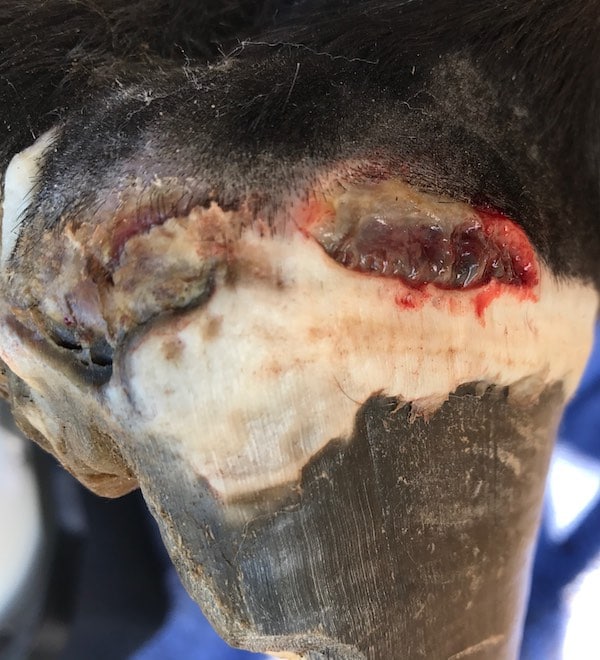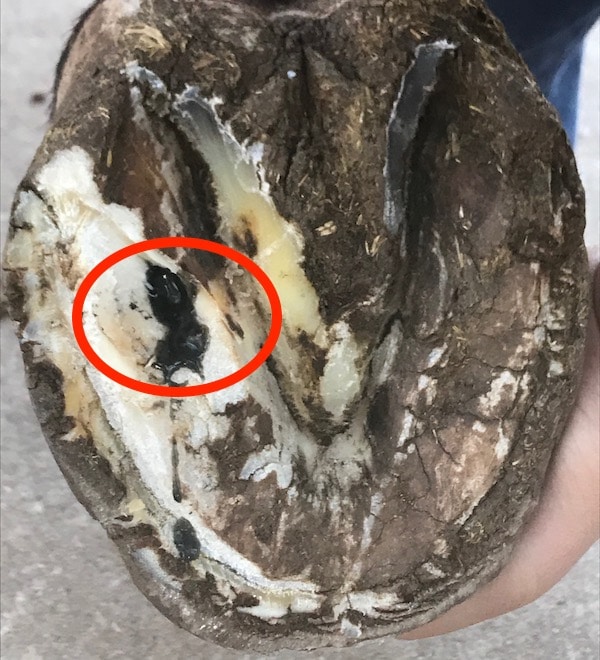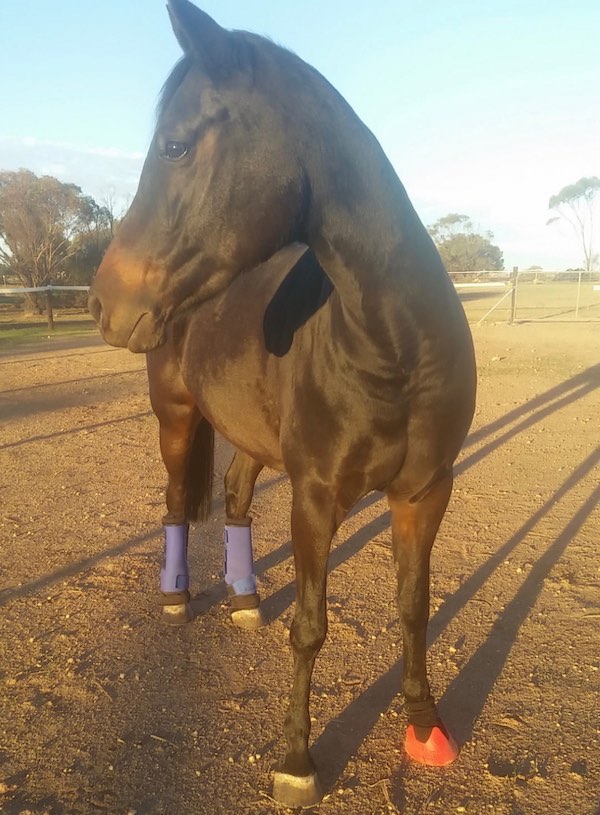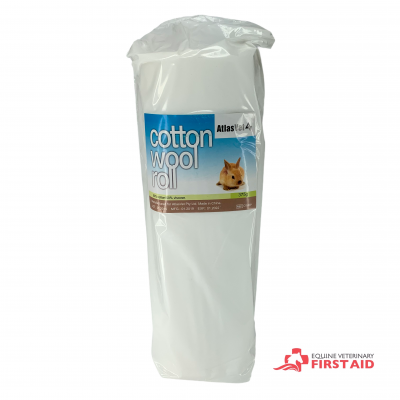29 Jul HOOF ABSCESSES
Winter is the perfect time for abscesses in horse’s feet. The wet ground makes the feet soft and more prone to injury and infection. Most abscesses start around the hoof wall at the white line where small defects can allow mud/manure to pack into the foot and start a fermentation cycle. Some abscess start from a direct puncture wound which allows bacteria into the subsolar space.
Signs to look out for:
- ‘Pointing’ the toe and not weight bearing through the heels
- Heat in the foot
- Increased (bounding) digital pulse
- Swelling in the pastern and fetlock region
- Sensitivity to pressure around the coronary band and heels, can be associated with a wound if the abscess tracts up the hoof
- Lameness in affected leg which can be quite severe when pressure build up is occurring
What you can do:
- Soaking the foot in a warm foot bath with a handful of epsom salts will help start drawing the abscess out
- Apply a poultice to the sole of the affected foot. The active ingredient in a poultice is boric acid and when moistened and activated with water it becomes a powerful drawing agent. Poultices should be changed every 24-36 hours and monitored for black-brown fluid staining which indicates abscess drainage.
Most shod horses will need the assistance of your local vet or farrier to remove the shoe, localise the abscess with hoof testers and establish drainage. The horse will experience rapid relief once the pressure is released. Antibiotics are seldom needed unless abscess are deep or there is swelling up the leg (cellulitis). Iodine foot baths are a great way to further neutralise infection as the solution can penetrate into tracts and cavities and contact any remaining bacteria.

Occasionally abscesses can track up the hoof wall and burst out at the coronary band as this is the path of least resistance for the increasing fluid and pressure build up. The trauma to the coronary band when the abscess bursts can cause a small defect to develop in the new horn tubules and often times a small horizontal mark is seen growing down the hoof wall after such an event. These cases often need to be treated like a wound and veterinary attention is advised as infection has spread to the soft tissues of the coronary band and pastern.

Once the abscess has drained and no further discharge is noted on the poultice, it is important to maintain a barrier to re-contamination of the tract or cavity. This can be achieved by wrapping the foot in a dry bandage (nappies are a great option here as their wicking action helps keep the foot dry) or by placing the foot in a boot (eg Tubeze). Once the damaged area grows out and the farrier trims the foot back to healthy and intact margins then the horse can be turned out without foot protection and can also be re-shod.














